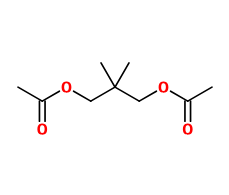
Photo credits: ScenTree SAS
| Company | Ingredient Name | ID | Comments | Naturality | Certifications | MOQ | Purity |
|---|---|---|---|---|---|---|---|
|
|
Aldéhyde C10 - 30gr | - |
Visit website
|
- | - | - |
General Presentation
-
CAS N° :
112-31-2 -
EINECS number :
203-957-4 -
FEMA number :
2362 -
FLAVIS number :
05.010
-
JECFA number :
104 -
Volatility :
Heart -
Price Range :
€
Physico chemical properties
-
Appearance :
Colorless liquid -
Density :
0,829 -
Refractive Index @20°C :
1,427 - 1,434 -
Optical rotation :
Data not available. -
Vapor pressure :
0,082 hPa @20°C 0,276 hPa @25°C -
Flash Point :
93°C
-
Molecular formula :
C10H20O -
Molecular Weight :
156,2 g/mol -
Log P :
3,8 -
Fusion Point :
-4°C -
Boiling Point :
216°C -
Detection Threshold :
Son seuil de détection est de l'ordre de 0,1 à 6 ppb (0,0000006%)
Chemistry & Uses
Uses in perfumery :
Aldehyde C-10 is used in citrus notes: orange, grapefruit. Also used in floral notes: rose, jasmine, in small quantities for a deepening effect.
Year of discovery :
1883
Natural availability :
Aldehyde C-10 is present in the essential oils as Coriander Leaf EO, several citruses from which it can be extracted in its natural state, and in other essential oils, in smaller quantity.
Isomerism :
Several floral notes are constitutional isomers of Aldehyde C-10: Citronellol and Dihydromyrcenol are among them.
Synthesis precursor :
Aldehyde C-10 can be converted into a Schiff base by reaction with Methyl Anthranilate or Indole, for example. It can also be used for condensation with another aldehyde or ketone to form the desired alcene.
Synthesis route :
Like the other aliphatic aldehydes, Aldehyde C-10, can be synthesized by reaction of decyl halides (chloride, for example) with dimethyl sulfoxide (DMSO), followed by an alkaline treatment with sodium bicarbonate.
Stability :
Aldehydes may form diethylacetals in alcoholic perfumes, with no real impact on their smell
Other comments :
Aldehyde C-10 was used for the first time in 1921, in Chanel No. 5.
Its smell can be compared with Aldehyde C-11 Undecylic, and is less zesty than Aldehyde C-11 Undecylenic.
Regulations & IFRA
Allergens :
This ingredient does not contain any allergen.
IFRA 51th :
This ingredient is not restricted for the 51th amendment






